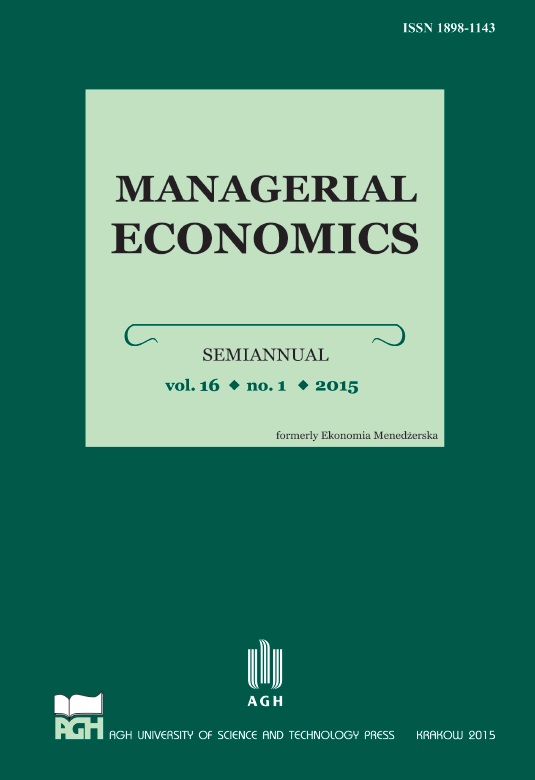The impact of estimation methods and data frequency on the results of long memory assessment
DOI:
https://doi.org/10.7494/manage.2015.16.1.7Abstract
The main goal of this paper is to examine the effects of selected methods of estimation (the Geweke and Porter-Hudak, modified Geweke and Porter-Hudak, Whittle, R/S Rescaled Range Statistic, aggregated variance, aggregated absolute value, and Peng’s variance of residuals methods) and data frequency on properties of Hurst exponents for stock returns, volatility, and trading volumes of 43 companies and eight stock market indices. The calculations have been performed for a time series of log-returns, squared log-returns, and log-volume (based on hourly and daily data) by nine methods. Descriptive statistics and distribution laws of Hurst exponents depend on the method of estimation and, to some extent, on data frequency (daily and hourly). While by and large in log-returns no long memory has been detected, some estimation methods confirm the existence of long memory in squared log-returns. All of the applied estimation methods show long memory in log-volume data.Downloads
Download data is not yet available.
Downloads
Published
2015-07-31
Issue
Section
Articles
License
Download, sign, scan and attach copyright statement form.
How to Cite
Brania, K., & Gurgul, H. (2015). The impact of estimation methods and data frequency on the results of long memory assessment. Managerial Economics, 16(1), 7. https://doi.org/10.7494/manage.2015.16.1.7

